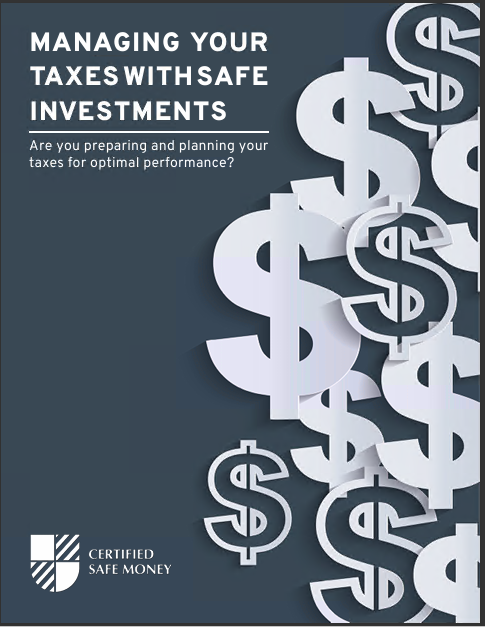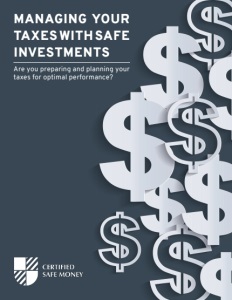Key Takeaways
-
Fixed Index Annuities (FIAs) and Variable Annuities (VAs) offer different benefits and risks. Your choice depends on your financial goals, risk tolerance, and retirement needs.
-
Understanding the mechanics of FIAs and VAs helps you make informed decisions about which option aligns with your financial future.
Annuities: A Path to Secure Retirement
Planning for retirement means ensuring a steady income that lasts your lifetime. Annuities, specifically Fixed Index Annuities (FIAs) and Variable Annuities (VAs), are popular financial products that promise this. However, not all annuities are created equal. FIAs and VAs have unique features, advantages, and potential downsides. Understanding these can help you navigate the decision-making process with confidence and clarity.
Annuities are designed to turn your savings into a stream of income that can last throughout your retirement years. By evaluating their distinct characteristics, you can determine which type—FIAs or VAs—aligns best with your long-term financial strategy.
What Are Fixed Index Annuities?
FIAs combine elements of traditional fixed annuities and market-linked growth. Unlike direct stock market investments, your funds are tied to a market index, such as the S&P 500, but your principal investment is protected. This protection makes FIAs appealing to those who want growth potential without the risk of losing their initial investment.
Key Features of FIAs
-
Guaranteed Minimum Return: FIAs typically offer a minimum interest rate, ensuring your investment doesn’t lose value over time.
-
Market-Linked Growth: Returns are based on the performance of a specific market index, subject to caps and participation rates. These limits define how much of the index’s growth you can earn.
-
Tax-Deferred Growth: Your earnings grow tax-deferred, meaning you pay taxes only when you withdraw funds. This feature can help your investment accumulate more significantly over time.
-
Lifetime Income Options: Many FIAs offer income riders, providing guaranteed income for life, regardless of market performance.
Pros of FIAs
-
Protection against market losses ensures your principal remains intact.
-
Predictable income streams make budgeting in retirement simpler.
-
No direct exposure to stock market volatility reduces anxiety.
Cons of FIAs
-
Limited growth potential due to caps and participation rates.
-
Surrender charges may apply for early withdrawals, often lasting between 5 and 10 years.
-
Complex fee structures, particularly with income riders, can reduce overall returns.
What Are Variable Annuities?
VAs take a different approach to investment and income generation. They allow you to invest directly in subaccounts, which are similar to mutual funds. This means your returns—and risks—are tied to the performance of these investments.
Key Features of VAs
-
Market-Driven Growth: Your investment’s value fluctuates based on market performance, offering the potential for substantial growth.
-
Tax-Deferred Growth: Like FIAs, your earnings are tax-deferred, allowing your investments to compound over time.
-
Riders for Protection: Optional riders can offer additional benefits, such as guaranteed income or enhanced death benefits for beneficiaries.
Pros of VAs
-
Higher growth potential compared to FIAs, especially in a robust market.
-
Flexible investment options let you customize your portfolio to align with your goals.
-
Riders provide added security for income and legacy planning.
Cons of VAs
-
Exposure to market risks can lead to losses during downturns.
-
High fees, including mortality and expense charges, reduce net returns.
-
Complexity in understanding subaccount performance and associated costs.
Comparing FIAs and VAs: The Core Differences
Risk and Return
-
FIAs: Designed for safety and predictable outcomes. They cap your returns but guarantee your principal, making them ideal for risk-averse investors.
-
VAs: Offer higher risk and potential returns. While you may achieve significant growth, poor market performance can reduce your principal.
Cost
-
FIAs: Typically have lower fees but may include costs for optional features like income riders.
-
VAs: Higher fees are common, including administrative charges, investment management costs, and optional rider expenses.
Flexibility
-
FIAs: Provide less flexibility in investment choices but deliver more predictable results.
-
VAs: Allow you to diversify your portfolio with multiple subaccounts, offering tailored investment strategies.
Choosing Between FIAs and VAs
Consider Your Financial Goals
-
Do you prioritize security over high returns? FIAs might be your answer.
-
Are you willing to embrace market risks for potential growth? VAs could align better with your goals.
Assess Your Risk Tolerance
-
If you’re risk-averse, FIAs provide peace of mind with their principal protection.
-
If you can tolerate market ups and downs, VAs offer opportunities for higher growth.
Time Horizon
-
FIAs often suit those nearing retirement, offering stability and predictable income.
-
VAs are better suited for younger investors who have time to recover from market volatility.
Income Needs
-
Both FIAs and VAs provide lifetime income, but the structure and guarantees differ. Evaluate available income riders to determine which plan complements your financial strategy.
Costs and Fees: What to Watch Out For
FIAs
-
Surrender Charges: These fees for early withdrawals can last 5-10 years and reduce liquidity.
-
Income Rider Costs: Optional guarantees for lifetime income come with additional fees.
VAs
-
Mortality and Expense Charges: Cover insurance-related costs and administration.
-
Subaccount Fees: Vary based on your chosen investments, impacting overall performance.
-
Rider Costs: Optional benefits like guaranteed income add to expenses.
Tax Implications: A Shared Advantage
Both FIAs and VAs offer tax-deferred growth. You won’t pay taxes on earnings until withdrawal, allowing your investment to compound more effectively. However, withdrawals before age 59½ may incur a 10% penalty, in addition to ordinary income taxes, which can significantly reduce early distributions.
Common Misconceptions About Annuities
FIAs
-
Guaranteed High Returns: While FIAs protect your principal, their returns are capped, limiting overall growth.
-
No Fees: Income riders and optional features can add to costs, reducing net returns.
VAs
-
Unlimited Growth Potential: Market downturns can erode gains and even result in losses.
-
Simple Fee Structure: VAs often include multiple layers of fees that require careful review.
Breaking Down the Numbers
Hypothetical Scenario for FIAs
Imagine an FIA tied to an index with a cap of 5%. If the index grows by 7%, your return is capped at 5%. If the index drops by 10%, your principal remains intact, though you earn no returns for that period.
Hypothetical Scenario for VAs
With a VA, if the market grows by 10%, your returns reflect this growth (after fees). Conversely, if the market drops by 10%, your investment value decreases proportionally, demonstrating the inherent risk of market exposure.
Which One Aligns With Your Retirement Goals?
There’s no universal answer to whether FIAs or VAs are better. Your choice depends on your financial priorities:
-
Security and Predictability: FIAs offer peace of mind through guaranteed protection and predictable income streams.
-
Growth Potential and Flexibility: VAs cater to those willing to embrace market fluctuations for the chance of higher returns.
Why Consult a Financial Advisor?
Navigating annuities can be complex. A financial advisor can:
-
Help you clarify your goals and risk tolerance.
-
Provide insights into annuity fees, terms, and surrender charges.
-
Tailor a comprehensive retirement strategy that integrates annuities effectively.
The Final Word on FIAs and VAs
Both Fixed Index Annuities and Variable Annuities have distinct roles in retirement planning. FIAs prioritize safety, making them ideal for conservative investors seeking predictable income. Meanwhile, VAs offer growth opportunities for those comfortable with market risks. Evaluate your goals, consult a professional, and select the option that best fits your vision for financial security.














